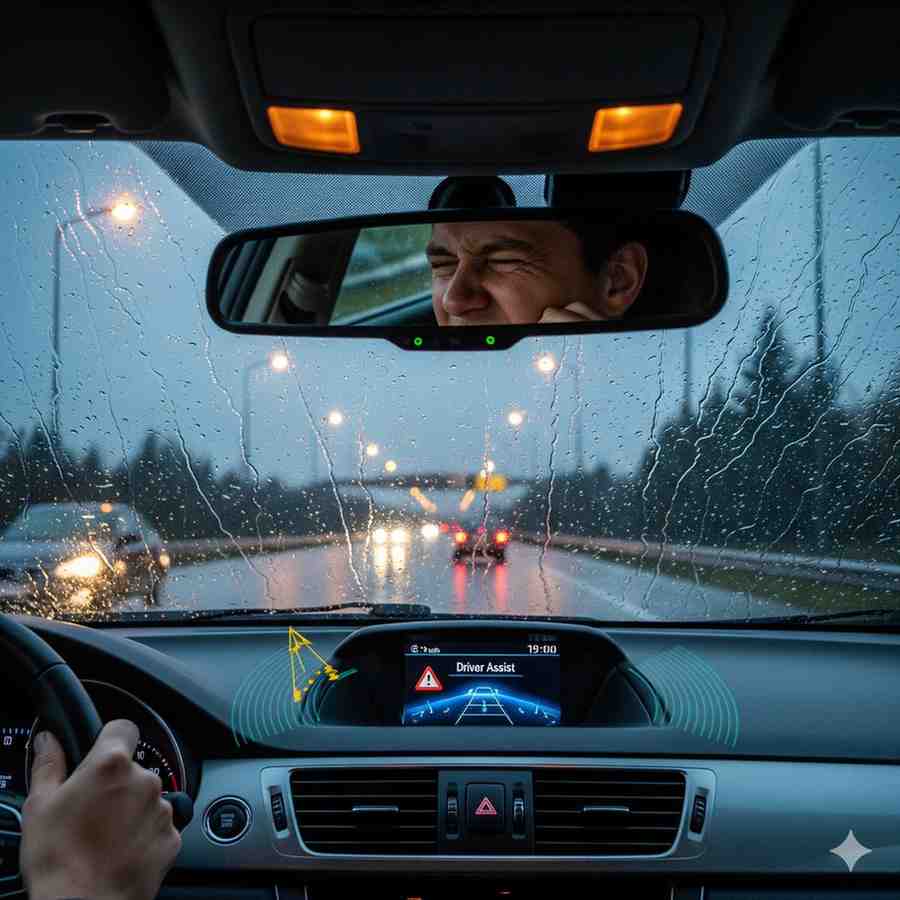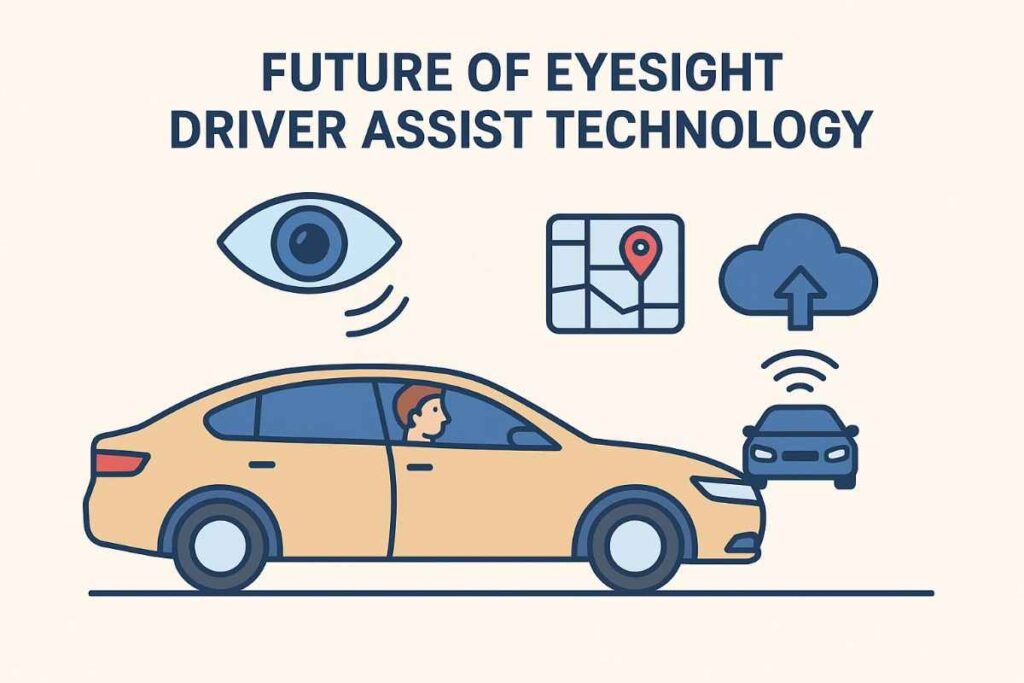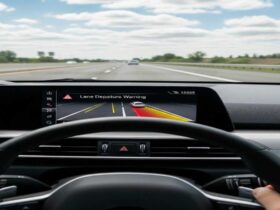As automotive technology advances, one of the most groundbreaking innovations is eyesight driver assist technology. This system, designed to improve road safety and driving comfort, is transforming how we navigate modern highways. Using cutting-edge sensors, cameras, and software, eyesight driving assist technology provides real-time assistance to drivers, helping prevent accidents and enhance overall driving performance. In this article, we will explore how this technology works, its benefits, challenges, and the impact it has on the future of driving.
What is Eyesight Driver Assist Technology?
This driver assist technology is an advanced driver assistance system (ADAS) that uses cameras and sensors to monitor road conditions and provide real-time feedback to drivers. Developed to reduce the risk of accidents, it offers features like adaptive cruise control, lane-keeping assistance, and pre-collision braking. With these capabilities, drivers can make better decisions on the road, ensuring a safer and more efficient driving experience.
The system typically utilizes stereo cameras positioned near the rearview mirror, scanning the road ahead for obstacles, lane markings, and other vehicles. This data is processed instantaneously to assist with maintaining speed, distance, and lane positioning, effectively enhancing the driver’s control over the vehicle.
How Does Eyesight Driver Assist Technology Work?
This driver assist technology relies on high-resolution cameras and advanced software algorithms to monitor the driving environment. The cameras are strategically placed at the front of the vehicle, continuously capturing images of the road. These images are analyzed in real-time, detecting hazards such as vehicles, pedestrians, and obstacles. Based on the information collected, the system activates various safety features to help the driver avoid potential collisions or accidents.
For example, if the cameras detect that the vehicle is getting too close to the car ahead, the system may reduce the speed by automatically applying the brakes. Similarly, if the car drifts out of its lane without signaling, the lane-keeping assistance feature will gently steer the car back into its lane.

Here is the unique image illustrating the Benefits of Eyesight Driver Assist Technology.
Benefits of Eyesight Driver Assist Technology
1. Enhanced Road Safety
One of the primary benefits of eyesight driver assist technology is its ability to enhance road safety. By continuously monitoring the surroundings, the system helps prevent collisions, significantly reducing the likelihood of accidents. Whether it’s alerting the smart driver to sudden stops in traffic or detecting pedestrians crossing the street, this technology is designed to keep drivers and passengers safe.
The pre-collision braking system, for instance, can apply the brakes automatically when a collision is imminent, potentially avoiding or minimizing the impact of an accident. This feature is particularly beneficial in heavy traffic or urban environments where sudden stops are common.
2. Reduced Driver Fatigue
Long drives and congested roads can cause fatigue and stress for drivers. Eyesight driver assist technology can help reduce this fatigue by taking over some of the more repetitive driving tasks. Features such as adaptive cruise control allow the car to automatically adjust its speed based on traffic conditions, so the driver doesn’t have to constantly brake and accelerate. This makes driving long distances more comfortable and less tiring.
In addition, lane-keeping assistance provides subtle steering inputs to help keep the vehicle centered in its lane, reducing the need for constant corrections from the driver.
3. Improved Reaction Times
Another advantage of eyesight driver assist technology is the improvement in reaction times. Human drivers often take a few seconds to react to unexpected events on the road, but this technology can respond almost instantaneously. By analyzing road conditions in real-time, the system can react faster than a human driver, applying the brakes or steering to avoid obstacles as needed. This rapid response reduces the risk of accidents caused by delayed reactions.
4. Fuel Efficiency and Environmental Impact
Although safety is the primary focus, eyesight driver assist technology can also contribute to improved fuel efficiency. By maintaining a consistent speed and reducing unnecessary braking and acceleration, vehicles equipped with this technology can optimize fuel consumption. Additionally, features like adaptive cruise control help drivers maintain the ideal speed, reducing fuel wastage caused by sudden stops and starts.
In the long run, the fuel-saving capabilities of this assist technology can reduce the overall environmental impact of driving by lowering emissions and promoting more efficient driving habits.
5. Increased Driver Confidence
For new or less experienced drivers, eyesight driver assist technology can provide an extra layer of security. Knowing that the vehicle is equipped with advanced safety features can boost confidence, making drivers feel more in control. This can be especially helpful in difficult driving conditions, such as heavy rain, fog, or snow, where visibility is reduced.

Here is the unique image illustrating the Challenges of Eyesight Driver Assist Technology.
Challenges of Eyesight Driver Assist Technology
While the benefits of this driver assist technology are clear, there are several challenges and considerations that come with its implementation.
1. Technology Limitations
Although eyesight driver assist technology is highly advanced, it is not without its limitations. Factors such as weather conditions, low light, and obstructions can affect the performance of the cameras and sensors. In heavy rain, snow, or fog, the system may struggle to detect lane markings or obstacles, reducing its effectiveness. Additionally, the technology may not be able to detect smaller or fast-moving objects, posing a potential safety risk.
2. Driver Overreliance
As with many forms of automation, there is a risk that drivers may become too reliant on eyesight driver assist technology. While the system is designed to assist drivers, it is not a substitute for active driving. Drivers must remain attentive and ready to take control of the vehicle at all times. Overreliance on these features could lead to complacency and, in some cases, accidents if the driver fails to intervene when necessary.
3. High Costs
The integration of eyesight driver assist technology into vehicles comes at a higher cost. The advanced cameras, sensors, and software required for this system can drive up the price of new vehicles. While the safety benefits may justify the expense for some buyers, the higher cost may deter others from adopting vehicles equipped with this technology.
4. Privacy Concerns
Another challenge with eyesight driver assist technology is the potential for privacy concerns. The cameras and sensors used in these systems collect vast amounts of data about the driving environment and the vehicle’s location. This data could potentially be accessed by third parties or used for surveillance purposes. Ensuring that the data collected is used responsibly and protected from unauthorized access is crucial to maintaining consumer trust.

Here is the unique image illustrating the Future of Eyesight Driver Assist Technology.
Future of Eyesight Driver Assist Technology
The future of this driver assist technology looks promising, with ongoing advancements in artificial intelligence (AI) and sensor technology expected to improve its capabilities. As autonomous driving technologies evolve, eyesight driver assist systems could become more sophisticated, offering even greater levels of safety and convenience.
One potential development is the integration of AI algorithms that enable the system to learn from past driving behavior and make even smarter decisions in real-time. Additionally, improvements in sensor accuracy and camera resolution could allow the system to perform better in challenging conditions such as bad weather or low visibility.
Furthermore, as more automakers adopt eyesight driver assist technology, we may see it become a standard feature in a wider range of vehicles, making advanced safety systems more accessible to consumers.
FAQs: Eyesight Driver Assist Technology
Q: How does eyesight driver assist technology improve road safety?
This driver assist technology monitors the road, providing real-time assistance with braking, steering, and speed adjustments to prevent collisions.
Q: What features are included in driver assist technology?
Key features include adaptive cruise control, lane-keeping assistance, pre-collision braking, and automatic speed adjustments based on traffic conditions.
Q: Does driver assist technology work in all weather conditions?
While highly effective, the driver assist technology can be affected by extreme weather like heavy rain, snow, or fog, impacting its performance.
Q: Can drivers become too reliant on eyesight driver assist technology?
Yes, there is a risk of overreliance, but drivers must remain attentive and ready to take control when necessary, despite the technology’s assistance.
Q: Does eyesight driver assist technology improve fuel efficiency?
Yes, by optimizing speed and reducing unnecessary braking, this driver assist technology helps improve fuel efficiency and reduces emissions.
Q: Are there privacy concerns with driver assist technology?
Since the system collects data about the driving environment, privacy concerns arise, so manufacturers must ensure data protection and responsible use.
Q: Is eyesight driver assist technology available in all vehicles?
Currently, this driver assist technology is available in select models, but it is expected to become more widely adopted as technology advances.
Q: Does eyesight driver assist technology work at night?
Yes, it works at night but may face challenges with low visibility. However, advanced sensors help compensate for reduced lighting conditions.
Conclusion
Eyesight driver assist technology represents a significant leap forward in road safety and driving convenience. By providing real-time assistance, reducing driver fatigue, and improving reaction times, it has the potential to save lives and make driving more enjoyable. However, like any technology, it comes with challenges, including cost, privacy concerns, and the need for responsible use.
As advancements continue and adoption increases, this driver assist technology is poised to become an integral part of modern driving, paving the way for a safer, more efficient future on the road.









Leave a Review